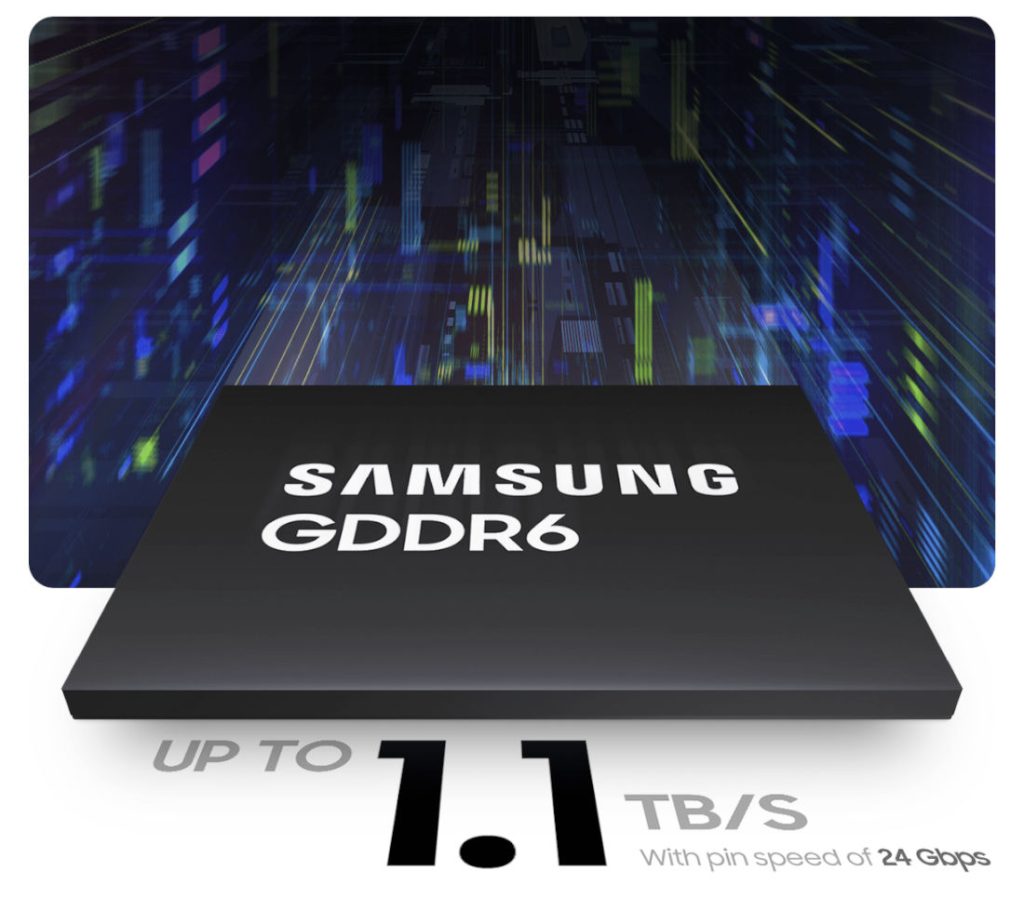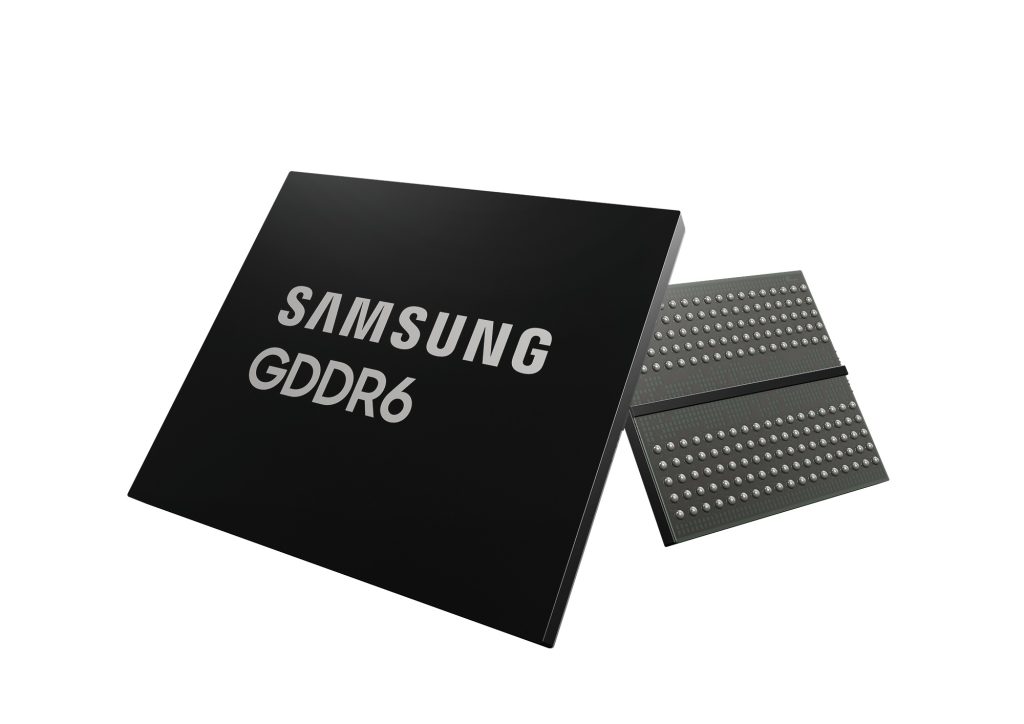
Samsung Electronics, a well-known memory manufacturer, has announced Graphics Double Data Rate 6 (GDDR6) DRAM, the industry’s first GDDR6 to deliver speeds of up to 24Gbps. This graphics DRAM will be 30 percent faster than the previous 18Gbps product, thanks to Samsung’s innovative circuit design and highly advanced insulating material.

This GDDR6 DRAM is constructed on Samsung’s third-generation 10-nanometer-class (1z) process, which employs extreme ultraviolet (EUV) technology to provide advanced graphics performance for next-generation graphics cards, laptops, and game consoles, as well as artificial intelligence-based applications and high-performance computing (HPC) systems.
When integrated into a high-end graphics card, GDDR6 DRAM can transfer up to 1.1 terabytes (TB) of data per second, or approximately 275 Full HD movies. This DRAM will support demanding AI accelerator workloads while enabling seamless 4K and 8K video playback.
The GDDR6 DRAM also include low-power options that use dynamic voltage switching (DVS) technology to help extend the battery life of laptops. Depending on the performance requirements, this technology adjusts the operating voltage. Samsung will offer 20Gbps and 16Gbps versions with approximately 20% higher power efficiency at 1.1V compared to the industry standard 1.35V GDDR6.
Availability:
Samsung plans to begin commercialization of its 24Gbps GDDR6 DRAM this month, in parallel with the launch of new GPU platforms, thereby accelerating graphics innovation in high-speed computing.
Regarding the announcement, Daniel Lee, Executive Vice President of the Memory Product Planning Team at Samsung Electronics, said,
The explosion of data now being driven by AI and the metaverse is pushing the need for greater graphics capabilities that can process massive data sets simultaneously, at extremely high speeds. With our industry-first 24Gbps GDDR6 now sampling, we look forward to validating the graphics DRAM on next-generation GPU platforms to bring it to market in time to meet an onslaught of new demand.
